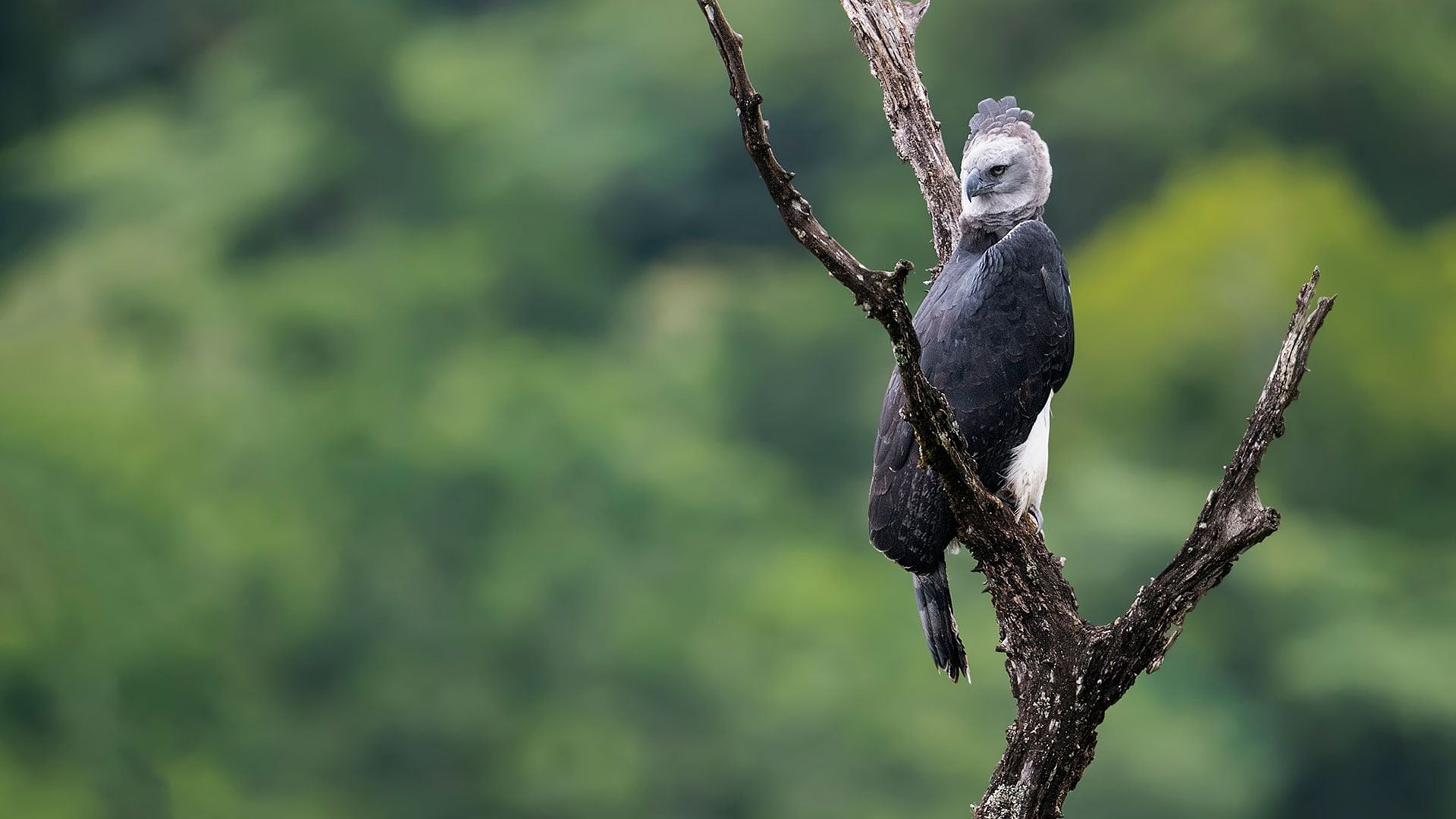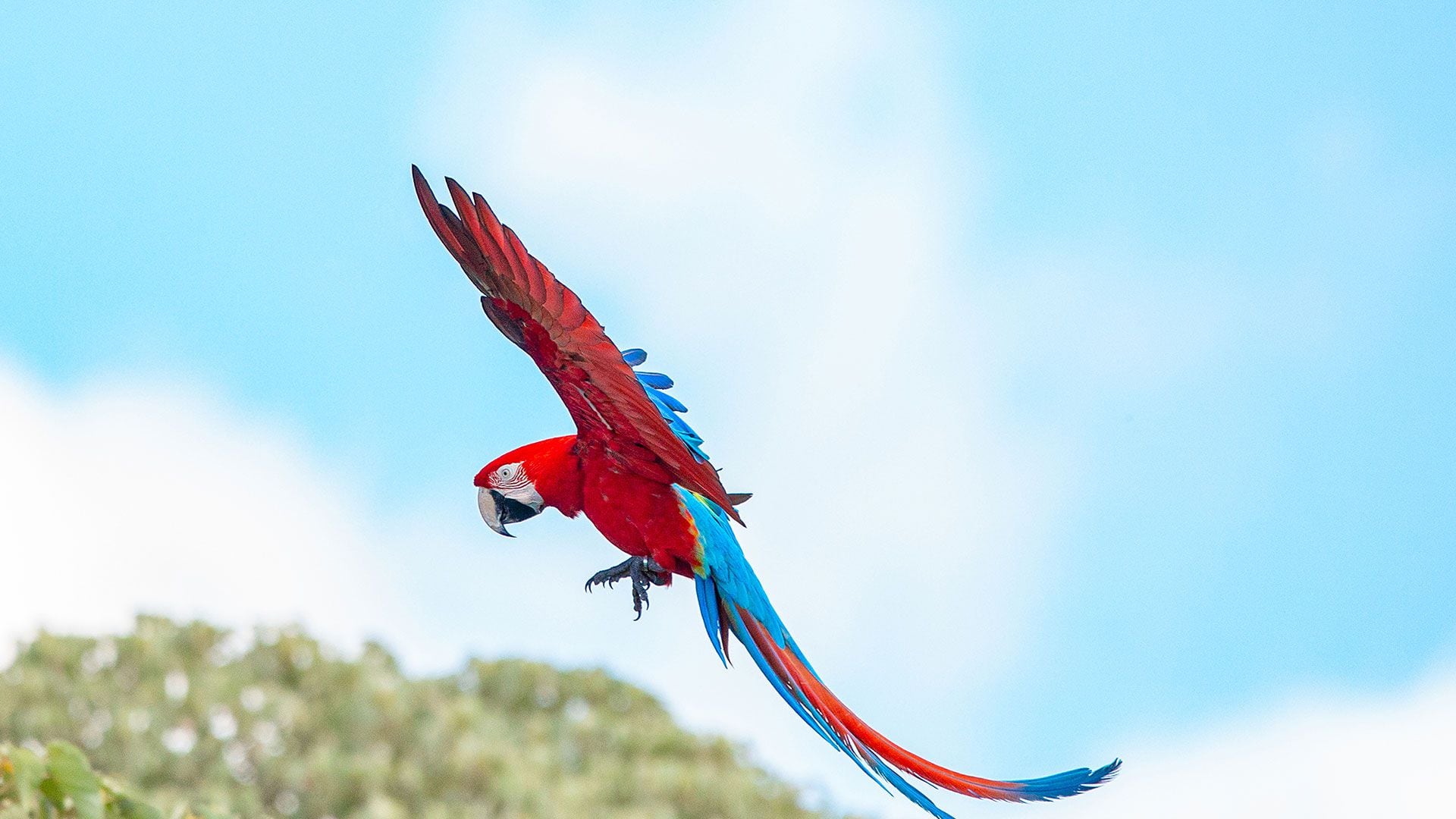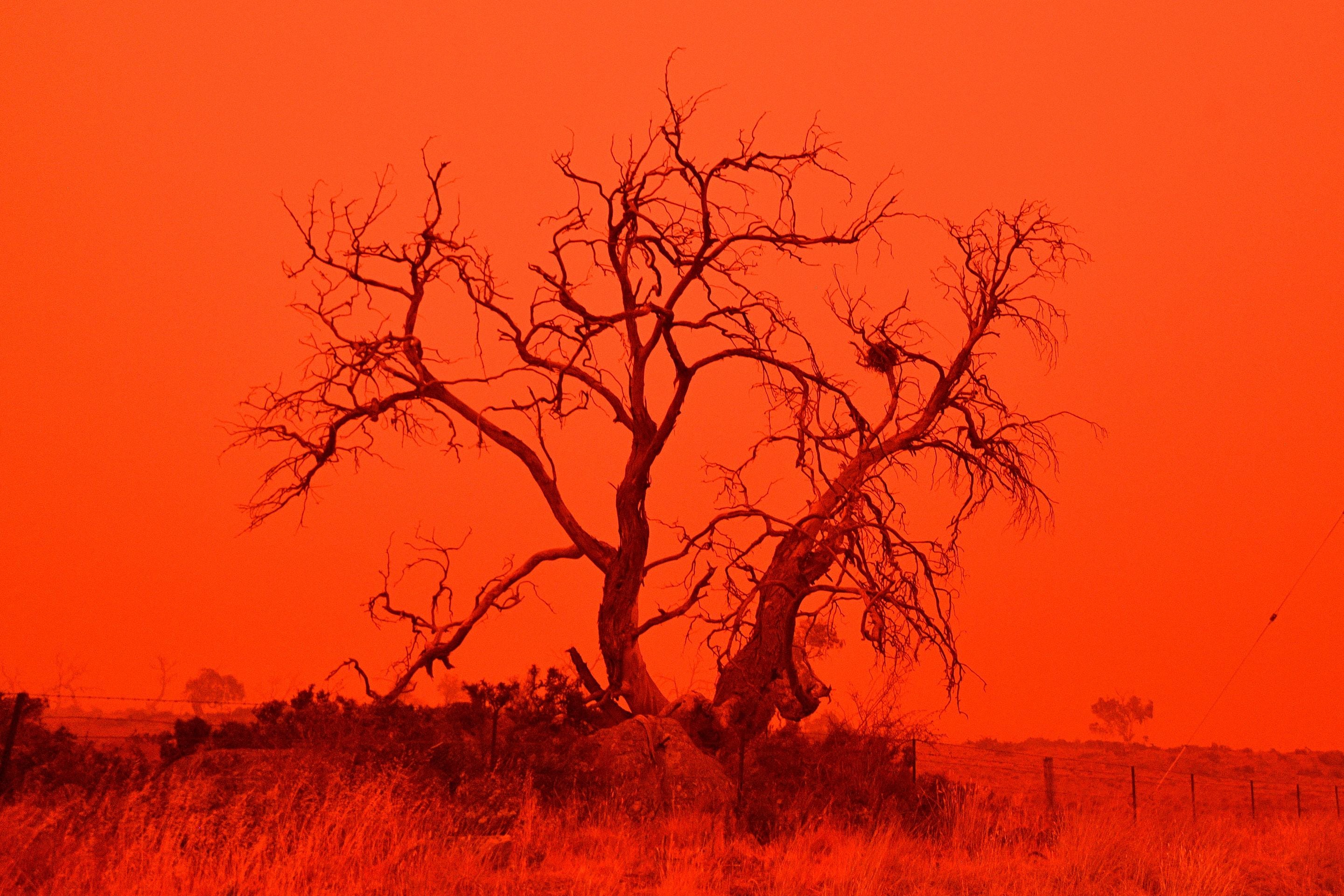
One million endangered species, extreme and prolonged droughts, catastrophic floods and fires, and the highest concentration in the atmosphere of carbon dioxide - one of the main gases causing climate change - in the last 5 million years. This bleak scenario is a product of the impacts humans have on Earth's wildlife and natural ecosystems.
It began to be verified thousands of years ago with the extinction of the first species of large birds and mammals, worsened in recent centuries with the emergence of new technologies and reached catastrophic dimensions after the industrial revolution. In this context, rewilding is positioned as one of the most effective strategies to restore the integrity of natural ecosystems and their ability to mitigate environmental crises that affect the planet, such as biodiversity loss, climate change and the emergence of pandemics.
Pursuing this goal, Fundación Rewilding Argentina, a group of conservationists and activists united by respect for the intrinsic value of all species, with the support of its strategic ally Tompkins Conservation, has been working for more than 20 years to protect and restore our country's natural ecosystems. Rewilding began in Argentina in the 1990s with Douglas and Kristine Tompkins who, together with Argentine conservationists and scientists, built this transformative vision in the Iberá Esteros. Today, Kristine Tompkins celebrates her legacy in the teams she helped form in Argentina that, now independent of Tompkins Conservation, continue to work in five provinces of the country.
Together with these teams, he went through the first steps that 25 years later would lead to the creation of the Iberá National Park and the reintroduction of the jaguar in Iberá after 70 years of extinction in Corrientes. “The Rewilding Argentina Foundation exceeded all my expectations. Today it is an independent organization that is going strong in its country, leading unique restoration projects in other ecosystems, such as the Patagonian steppe, the maritime coast and the Chaco region, achieving tangible results for wildlife and communities,” said Tompkins, one of the most famous philanthropic companies in Argentine history, donor of the 195,094 hectares of Iberá National Park, promoter of rewilding processes and promoter of environmental activism, in an interview with Infobae.

Founded in 2010 under the name of Flora y Fauna Argentina, Rewilding is heir to the legacy of The Conservation Land Trust Argentina, an institution created in 1997 by the Tompkins. Its main projects include the Iberá Park, in the province of Corrientes - where the reintroduction of anteaters, jaguars or giant otters stands out - the El Impenetrable National Park, in Chaco -the second largest continuous forest in South America, after the Amazon-; the Patagonia Park, in Santa Cruz, a very sensitive to climatic effects and intensive land use, and the most recent, the Blue Patagonia in Chubut.
He was 22 years old when he started working with Yvon Chouinard, the founder of the company known for its Patagonia environmental focus, after finishing his studies at university. He was always in contact with climbers and venturing on mountain hikes. Over time, he began to participate in several discussions with biologists and environmentalists about the extinction crisis and the importance of protecting large territories to conserve large carnivores. “Above all, I remember very well when in the 90s we started coining the term 'rewilding'. Everything was new, but passion and scientific knowledge indicated that it was her responsibility to act,” said the expert.
For 30 years of his life he dedicated himself to protecting and restoring the beauty and biodiversity of the Iberá Wetlands. “They have been quite an adventure in a good way. A teamwork, with many incredible people who taught me a lot and that took me beyond the limits I dreamed of. When you work for a cause of public good, anything is possible and, despite the climate and environmental crisis, it pays to give your best. Without a vibrant nature there would be no beauty and there would be no economy, we would not survive,” he stressed.
He added: “The legacy of Tompkins Conservation has been a contribution on land to the creation of many parks in Argentina and Chile, the work of positioning new nature tourist destinations so that everyone can live the experience of feeling part of and in contact with wildlife and generate local economies to starting from it. And it has also been to help Rewilding Argentina become an independent NGO and be able to move forward by helping to restore the nature of their country.”
Rewilding: what, why and how

The process is unique in the world and has two main objectives: to conserve biodiversity and the ecological processes of ecosystems and to turn these places into engines of economic development while respecting the natural world. Rewilding is a fundamental tool for reversing the extinction crisis that is ravaging the planet and for mitigating other environmental crises such as climate change and the emergence of pandemics. Such is the case that several countries in the world, such as Australia, the United States, several countries in Europe such as Great Britain and Romania, and several countries in Africa such as South Africa and Kenya are implementing it on a large scale. But for the impact of rewilding to be global, governments need to be involved to facilitate, fund and lead these programs.
This is a restoration strategy that seeks to restore the integrity of natural ecosystems by transforming them into complete ecosystems (with the species that inhabited them since present historical times) and functional (with these species in sufficient numbers to fulfill their ecological roles). Complete and functional ecosystems provide the ecosystem services that support life on this planet, including the existence of people. Complete and functional natural ecosystems also provide opportunities for local development based on wildlife observation-based nature tourism, which today represents an “engine” for diverse communities.
“Healthy ecosystems basically depend on the existence of numerous interactions (many of them still unknown) between individuals of different species, rocks, soil, climate, all elements. If some of these 'key pieces' disappear, everything starts to change. There are cascading effects because everything is interconnected. If species become extinct - and we know that in the last 500 years, since the industrial age, the number of species that become extinct has accelerated due to human actions - there are fewer opportunities to survive in the face of catastrophic changes,” Tompkins explained.
The specialist asserted that “we, as humans, depend on that entire ecosystem to continue to exist.” “Rewilding is basically management to bring back species that have become regionally extinct and ensure conditions so that they do not become extinct again. That is, to change the use of the territory, the economy and the values that put those species at risk. Once species that play a key role in the ecosystem return, it is easier to regain the functionality of the entire ecosystem. The key species are, for example, top predators, such as the jaguar or the giant otter.”

But what is a complete ecosystem? One where all the species that evolved there coexist, that is, it contains populations of all the species that inhabited it since historical times. However, restoring all forms of wildlife that were typical of an ecosystem and that have become extinct by human causes is a titanic task, sometimes impossible, and therefore some must be prioritized over others. We know that all species in an ecosystem are important, but science points out that there are some that are more important than others for an ecosystem to be complete and functional, and these are the so-called key species.
A key species is one that, in relation to its abundance, we say that it disproportionately influences the ecosystem it inhabits because, through different mechanisms, it determines the distribution (the area where they live) and the abundance of other species. One of these mechanisms is known as the trophic cascade. In a trophic cascade, the key species acts from higher levels of the food chain (for example, top predators such as puma) affecting lower levels (herbivorous animals such as guanaco and therefore vegetation). The puma feeds on guanacos and in this way determines its distribution and abundance and also that of the vegetation consumed by the guanaco. In a trophic cascade, mechanisms initiated at the top of the food chain regulate ecosystems from the top down.
Scientific evidence shows that if a predator that is at a higher trophic level of an ecosystem is lost, a series of cascade reactions are triggered with effects on the lower levels of the food chain to which it belongs. These reactions can cause an imbalance in the ecosystem, affecting its structure and dynamics, resulting in an impoverished, more homogeneous and therefore less diverse system. The most dangerous thing is that these impoverished ecosystems are less resilient and therefore more vulnerable to undesirable changes, many of which are caused by humans.

Ecosystems, in addition to being complete, must be functional: it is not enough that key species are present, but they must also be present in sufficient numbers to fulfill their ecological roles. When in a region the number of individuals of a species decreases to minimum values, we say that we are facing a functional or ecological extinction, which precedes numerical or total extinction, represented by the disappearance of all individuals.
In other words, a few individuals of a species present in an area do not ensure that the species is fulfilling its role in the ecosystem, which includes important interactions between different species. This is why rewilding is not only concerned with restoring a key species that is absent from a natural system (this process is called reintroduction), but also to increase the numbers of species whose populations are diminished (supplementation process). In both cases, one proceeds only if the absence or decrease is the result of human activity.
It is important to mention that, as a process of ecological restoration, rewilding is complex and involves a certain degree of uncertainty regarding the final result, it focuses on the restoration of processes and not necessarily on recovering pristine original states. In other words, there is the possibility that once the work is finished, some characteristics of the original ecosystem will not be restored and that new features that were absent from it will be observed.
There is also a strong link between biodiversity and climate that is increasingly recognized by science and society at large: complete and functional natural ecosystems capture and store atmospheric carbon helping to mitigate climate change. This storage capacity could be increased from 1.5 to 12 times by implementing rewilding projects that restore species that play key roles in the ecosystems and ecological interactions of which they are part. “Animating the carbon cycle” is the concept that explains this increase in carbon capture and storage capacity by ecosystems, as a result of the execution of rewilding projects.
Past, present and future: implementing rewilding in Argentina

Argentina, one of the countries with the greatest loss of fauna in South America, presents a unique opportunity to become a leader in the development of rewilding. In dialogue with this media, Sebastián di Martino, biologist and director of conservation at Rewilding Argentina, said that “for this, it is up to us to act and to work to not only protect what is left, but also to recover what we lost; there is an urgent need to restore our natural environments, even in places that we mistakenly consider pristine, such as the National Parks and other protected areas of our country.”
“Since 2007 we have been working in Iberá and the results are very satisfactory, not only because of the number of species that have been reintroduced and that had become extinct, but also because a large natural park of 750,000 hectares has been built or designated. Both events were carried out with great social and political support. With great pride, today Argentines can say that Iberá has become the surely most ambitious multi-species reintroduction project in the Americas,” he explained.
For the expert, “Argentina is a country where knowledge and technologies have been developed, and human resources have been trained to implement this strategy. We have been able to develop the knowledge to link work with people and the economy. We have the opportunity to climb it to other regions as we are doing now in El Impenetrable or in Patagonia Park. It is a strategy that has been largely underdeveloped in Latin America and without a doubt, Iberá's results are putting our country on the map of conservation worldwide.”
In conclusion, Tompkins stressed: “I am convinced of the entrepreneurial capacity and attitude of humans. We like to do, develop and act. That is why I think we need to channel that energy into responsible and regenerative action, which brings back and restores the habitat of the species that are our traveling companions. To continue sharing the Planet, we need everyone to play their unique role in the ecosystem. I believe in peace between us and the rest of the species. I think we need more peace and tolerance not only between humans, but between all living things.”
Days ago, as part of World Rewilding Day, Fundación Rewilding Argentina published a free book in which it navigates more than two decades of experience in the Iberá Project, reviews the general history of rewilding and proposes a vision of the future of this conservation strategy in Argentina and South America. “Today more than ever I am proud of the book they are presenting and of all the achievements made in their first years of creation. The one in Rewilding Argentina, I hope, will help to reverse the extinction crisis”, he concluded.
KEEP READING:
Últimas Noticias
Debanhi Escobar: they secured the motel where she was found lifeless in a cistern
Members of the Specialized Prosecutor's Office in Nuevo León secured the Nueva Castilla Motel as part of the investigations into the case

The oldest person in the world died at the age of 119
Kane Tanaka lived in Japan. She was born six months earlier than George Orwell, the same year that the Wright brothers first flew, and Marie Curie became the first woman to win a Nobel Prize

Macabre find in CDMX: they left a body bagged and tied in a taxi
The body was left in the back seats of the car. It was covered with black bags and tied with industrial tape
The eagles of America will face Manchester City in a duel of legends. Here are the details
The top Mexican football champion will play a match with Pep Guardiola's squad in the Lone Star Cup

Why is it good to bring dogs out to know the world when they are puppies
A so-called protection against the spread of diseases threatens the integral development of dogs




